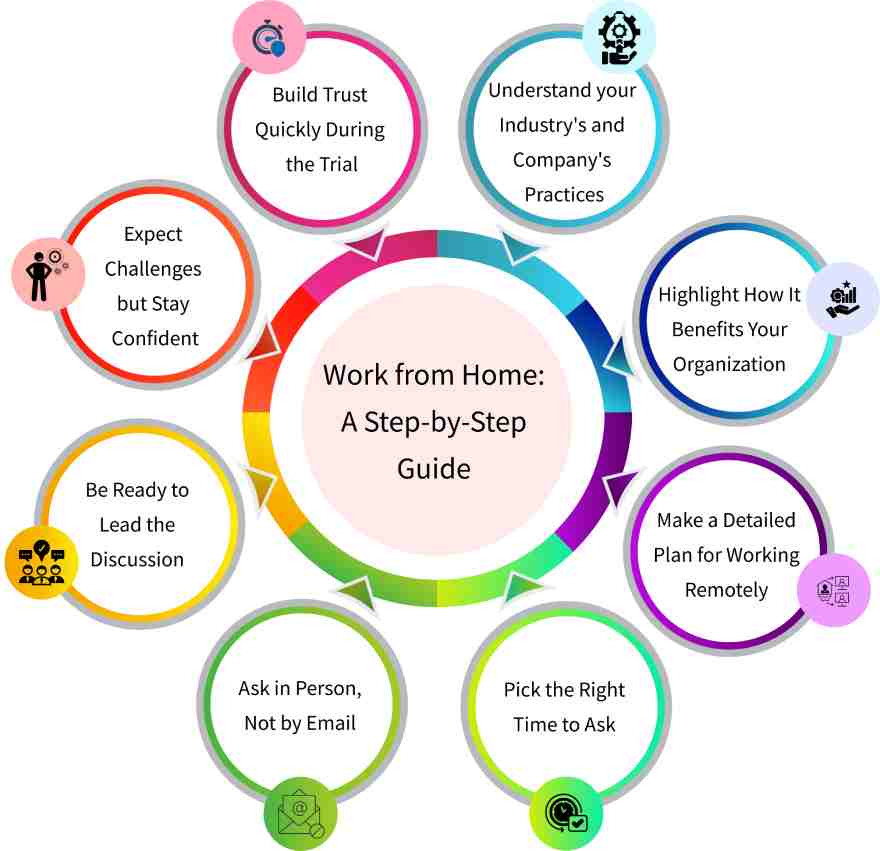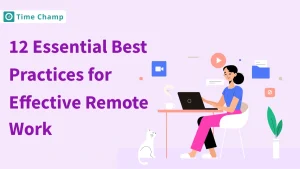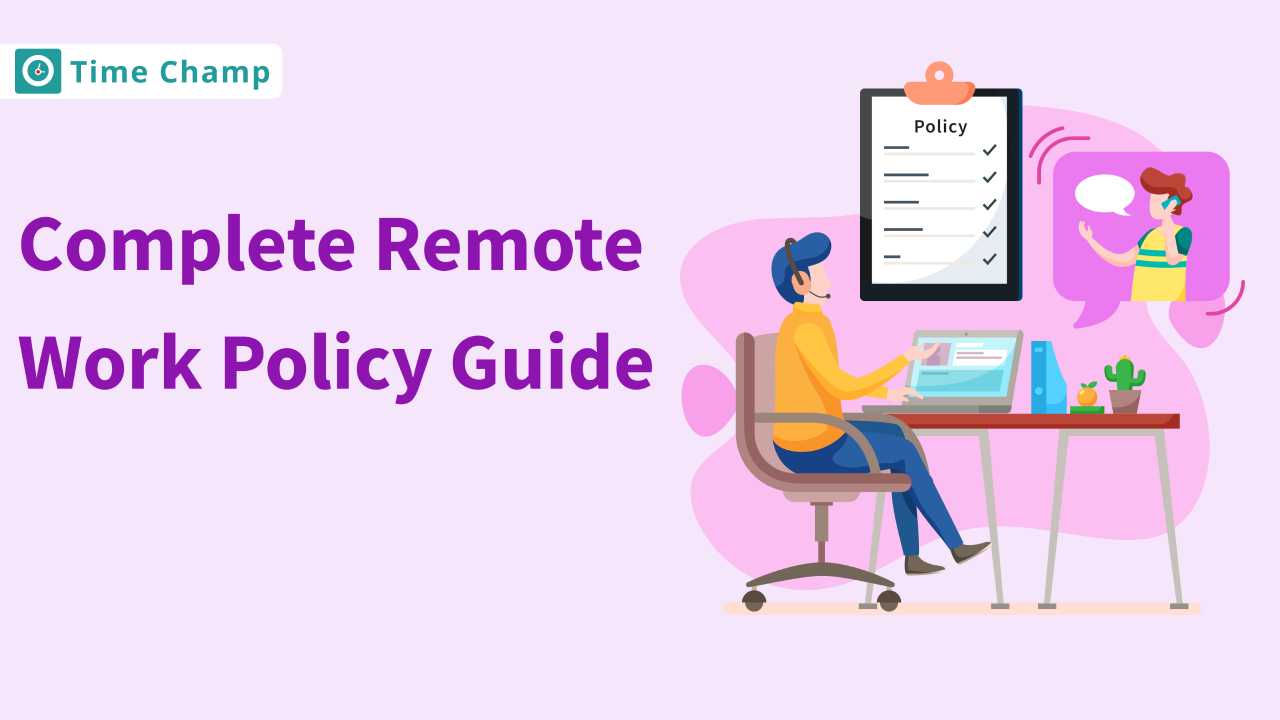Asking to work from home can be tricky, but it can be handled smoothly if approached correctly. You want to show the company that you’re serious about this request and how it will benefit them. Did you know that 74% of U.S. companies are using or planning to implement permanent remote work options? Since remote work is now widely accepted, this may be the perfect time to bring up your request. If you’re prepared, know when to make your case, and have a clear plan, you’ll be able to present a strong argument for requesting working from home. Here is how to ask with confidence for flexible work from home in a step-by-step guide.

Step1: Understand your Industry’s and Company’s Practices
Before you approach your manager to ask for a work-from-home arrangement, research how work-from-home policies fit into your industry and company. Think about how common remote work is for your job type. Is your industry especially suitable for working from home, or are individuals in your position less likely to do so because of specific job functions?
Additionally, review your company’s current policies or practices regarding remote work. Having colleagues who already work from home sets a good precedent. Understanding the company’s stance will enable you to tailor your request in a way that aligns with its policies, thereby increasing your chances of approval. Be prepared to address any concerns that may arise, such as how communication and availability will be managed.
Step2: Highlight How It Benefits Your Organization
The key is to frame your request about how your work-from-home arrangement will benefit your employer and not just you. So, consider the priorities of your company, is it to boost productivity, cut operational costs, or make employees happy? Then appeal to those needs in your request.
For instance, you may explain that working from home, will help you concentrate better with fewer office distractions or that the commuting time can be translated into more productive work hours. If applicable, mention how other companies are shifting towards flexible options to hold on to their most qualified employees and to attract new talented minds. If taken in the right context, this decision will benefit the organization as a whole by improving performance, and productivity, and reducing absenteeism.
Step3: Make a Detailed Plan for Working Remotely
Before you ask your boss to allow you to work from home, you need to have a definite plan for how you would handle your duties from home. You need to detail how you would maintain contact with your team throughout the day so as not to miss key interactions. You’ll also have to specify how you will stay on top of deadlines and include how you will be available during core business hours. Indicate the tools you’ll use, like a VPN for secure network access or project management software to track assignments.
Also, designate potential problems like technical difficulties or miscommunication, and pre-identifying solutions will reassure your employer that all logistical aspects have been carefully considered, showing that you are prepared to work effectively from a distance.
Step4: Pick the Right Time to Ask
Timing plays a very crucial role in making your request. You should choose the right moment to ask for remote work, which will make a big difference in how your proposal will be received. Don’t ask during high pressure times, such as right before major project deadlines or while the company is dealing with internal issues. Wait for a period when your performance is strong and contributions are recognized.
Try to time it appropriately with a positive event, for example, after receiving great feedback on a project or as part of your performance review. That way, you indicate that your output will not be affected by the remote working environment and that you have already demonstrated your worth to the organization. And naturally, timing your request demonstrates how careful and professional you are.
Step5: Ask in Person, Not by Email
Ideally, you should discuss it face-to-face when you make a significant request like this rather than doing it in an e-mail. Video or in-person calls allow for a personal conversation. You will be able to clearly communicate your reasons, answer questions in real time, and establish trust with your manager in this arrangement.
Non-verbal cues, such as body language and tone of voice may also help convey seriousness and commitment to that arrangement. While it may be easier to send an email, live communication reflects your confidence in the request you’re making and values the relationship with your employer enough to discuss it openly. If you can’t meet in person at all, a video call is the next best alternative to maintain that personal touch.
While preferable to discuss significant requests in person or at least on video calls, you will likely need to email your manager first. Below is an example of what such an email could look like, adapted to your communication style and preferences:
Hi [Your Manager’s Name],
I’d like to schedule a meeting to discuss how a remote work arrangement could enhance my productivity and align with the team’s objectives.
I’m available in the next two weeks on [insert specific dates and times] and look forward to discussing this further.
Could you please let me know your availability so we can find a suitable time to discuss this?
Thanks,
[Your Name]
Step6: Be Ready to Lead the Discussion
When you’re discussing your request, be prepared to lead the conversation. Come with a clear agenda, explain why you are requesting to work remotely, how it will benefit the company, and how you plan to ensure you continue to be productive. Anticipate some of the concerns that your manager may have, such as reduced communications or reduced output, and be ready with answers for each of these potential areas of concern.
Lead with solutions, such as how often you will check in, how you will track your progress, and how you will handle any technical challenges that may arise. Taking charge of the conversation shows you’re taking this request seriously and have put thought into how it will work. Being proactive helps build confidence in your manager about your ability to handle the responsibilities of remote work.
Step7: Expect Challenges but Stay Confident
Managers often express concerns about remote work, unless it is widely practiced in the workplace. Your employer may wonder whether you’ll be able to work effectively or stay productive without face-to-face supervision. While you must certainly listen carefully to these concerns, you should stay confident in your ability to address them.
For example, you can agree to set a regular time for check-ins, to update status through project management tools, or even to take up a trial period in order to prove that working remotely doesn’t affect performance. Don’t be disheartened if the initial response is not enthusiastic. Look calm, professional, and prepared to negotiate. Believing in your ability to manage remote work will help you address any challenges that arise.
Step8: Build Trust Quickly During the Trial
If your manager agrees to a trial period for remote work, then treat it as an opportunity to prove that working from home is just as effective as working in the office. During this trial, you must live up to or exceed all expectations. Be diligent with communication, ensure you respond to messages on time, don’t miss any meetings, and provide regular updates on your progress. Work on maintaining or improving the quality of your output.
Address minor issues before they blossom into unmanageable problems and monitor the impact remote work has on both you and the company. Trust will be built during this trial period, and it is what can strengthen a remote working arrangement. If you’re able to demonstrate that you’re just as productive, if not more so, from home, your employer is likely to agree to the arrangement in the long run.
If you successfully get the chance to work from home, then create a professional work from home setup, it helps you effectively focus on work and efficiently complete every task.
Conclusion
Asking to work from home need not be a daunting task if you do it thoughtfully. By understanding what your company’s remote work policies are, emphasizing the benefits of working from home that can bring to the organization, and with a great plan prepared, you will be able to present a strong case. Remember to choose the right time to make the request and discuss it in person or via video call are also other factors to be considered. Be ready to lead the conversation and address any concerns your manager may have. Finally, if you get a trial period, then use it as a chance to gain trust and prove yourself to be equally effective from home. With these steps, you can successfully navigate the process and create a work arrangement that suits both you and your team.
Unlock your remote work potential with Time Champ—your essential tool for maximizing productivity!
Signup for FreeBook DemoFrequently Asked Questions
To make a convincing request, understand your company’s remote work policies, mention how it benefits the organization, and craft a detailed plan that depicts how you will deal with tasks, communication, and productivity.
The best time to ask is after you have shown good performance, for instance, right after you complete a good project or when reviewing your performance. Don’t ask at the time of maximum stress, or during major company events.
Be prepared to detail how you will keep in touch, suggest regular check-in times, and use tools such as project management software. Demonstrating a proactive approach to communication and planning to be productive can also ease any concerns your manager may have.
The trial period is the opportunity through which you show what you are capable of. Communicate constantly, meeting expectations and surpassing them while maintaining a high level of productivity to build trust and a good relationship with your employer.
Face-to-face or video communication will allow a more personal, direct conversation. You can answer questions in real time and show your commitment, which builds trust and demonstrates you’re serious about the arrangement.







